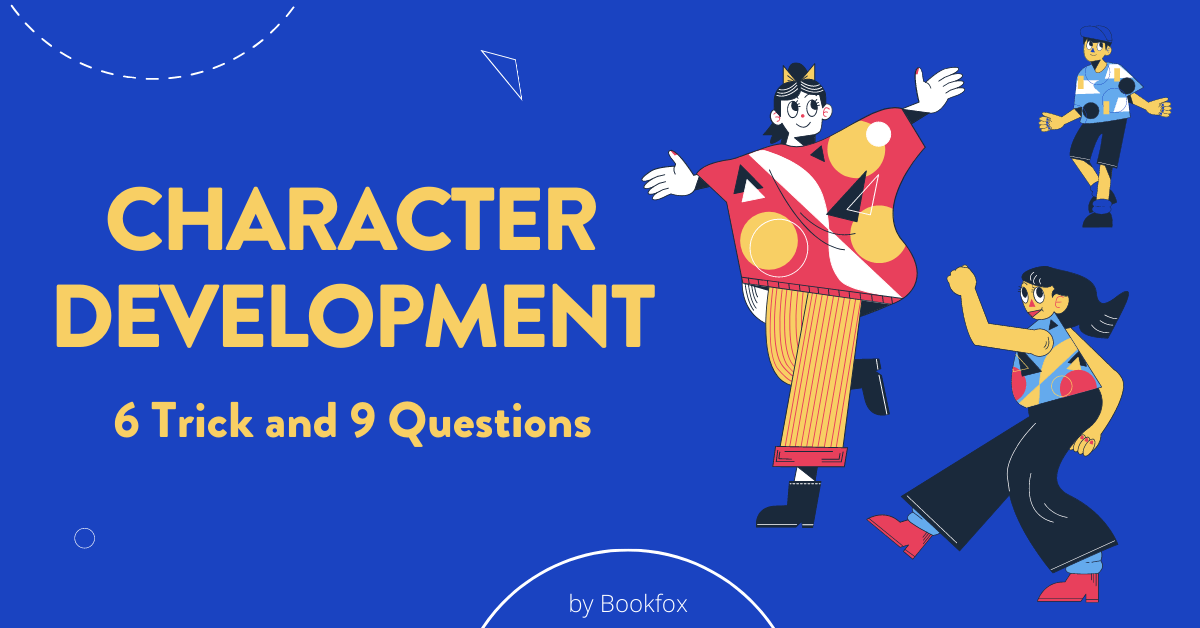 Your characters matter more than your plot.
Your characters matter more than your plot.
I’ll say it again: your characters matter more than your plot.
You can give your audience dragons, mystery, romance, or even a massacre at a wedding, but none of that will matter if the reader doesn’t care what happens to the people. They are the ones who drive the story. You can build the most unique world with the most intricate plot, but if your characters have as much collective personality as a lamp, then your fiction will have as much life and energy as an Ikea warehouse.
Granted, I could be completely misleading you, and if you want to take it upon yourself to challenge and break this rule, then all the power to you. Let me know how that goes. For the rest of us writers however, I’ve collected some tools and tricks to help build some well-developed characters and bring your story to life.
As always, these are suggestions, not commandments, meant to help you with all aspects of character development, which I define as building your character into something fully formed and interesting.
6 Helpful Tricks for Character Development
1. Don’t Create a Mary Sue
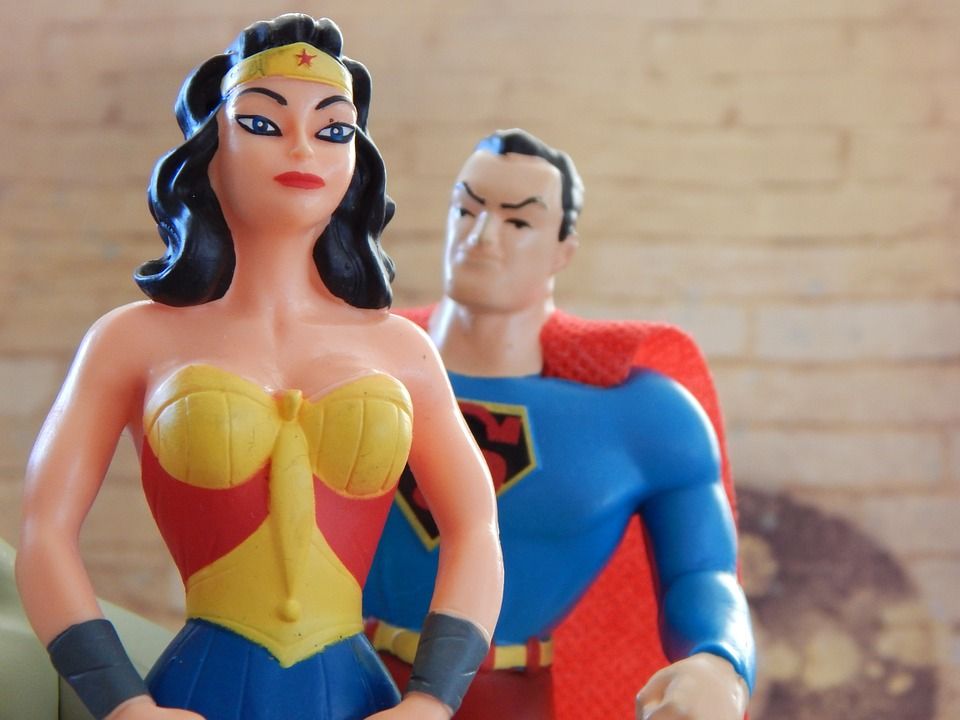 Mary Sue is a character stereotype, typically a woman, who is beautiful, funny, and just about good at everything with no history to suggest that she should be. Often times, even her “flaws” will actually be strengths (loves too deeply, works herself too hard).
Mary Sue is a character stereotype, typically a woman, who is beautiful, funny, and just about good at everything with no history to suggest that she should be. Often times, even her “flaws” will actually be strengths (loves too deeply, works herself too hard).
Pull out that list you’ve been making of all the strengths and weaknesses and really make sure that A) they are all explained by the context within your story and B) there is generally an equal amount in both categories. Although we all like characters who are good at things, people who are too good at everything just tend to make us skeptical.
2. Do Give Them a Personal History
 Even if this is something that is never fully divulged in the narrative, as the writer, you should really still know this.
Even if this is something that is never fully divulged in the narrative, as the writer, you should really still know this.
Think of it as giving yourself the upper hand as your write. You may only bring up one or two aspects of it once you actually get writing, but by creating a rough history for your character, you’ll also be able to tie together a lot of other elements in their life and create context. Not to mention, if an unforeseen situation comes up for your character, their next course of action will be obvious to you because you’ll already understand their character arc in full.
This is the Hemingway principle of the iceberg: only 10% of an iceberg is visible. This is normally applied to what you omit from the story in terms of plot and sentences, but I think it applies to character development as well.
If you put everything you know about a character into the story, they will be shallow and undeveloped. You have to know a wealth of information about a character to make them real, such a wealth that you can only squeeze 10% of what you know into the book itself. Then your character will be rich and full.
3. Do Pay attention to the Secondary Characters
 While I love paying exclusive attention to my favorite 2 or 3 characters as much as anyone, don’t miss the opportunity to develop your secondary characters. Granted, secondary characters can never be as fully formed as the main characters, but they should still have pizzazz and an identity.
While I love paying exclusive attention to my favorite 2 or 3 characters as much as anyone, don’t miss the opportunity to develop your secondary characters. Granted, secondary characters can never be as fully formed as the main characters, but they should still have pizzazz and an identity.
It’s tough to come up with examples of secondary characters that you remember, because by definition they play second fiddle to the main characters, but here’s an example from J.D. Salinger. Salinger, in all his Glass Family stories, has one of the four siblings that is not crazy or strange. She is normal and well adjusted and lives a middle-class life. Her name is Beatrice ‘Boo Boo’ Glass Tannenbaum, and she’s fascinating simply because she came out of such a wild family and became sane.
Another great example is Orr from Catch-22. He drives Yossarian crazy with ridiculous stories, and crashes his plane every time he flies, but he’s also the most sensible character in the book. You have to love the guy.
4. Do Give Them Room to Grow and Change
 We love character development for a reason. It is just so satisfying to see someone change and grow into a fuller version of themselves. The thing is, that can’t happen if they come off the keyboard fully formed and perfect.
We love character development for a reason. It is just so satisfying to see someone change and grow into a fuller version of themselves. The thing is, that can’t happen if they come off the keyboard fully formed and perfect.
I challenge you to think of any book you’ve ever read or movie you’ve seen where the main character does not change over the course of the story.
You can’t find an example because one does not exist. That’s how important growth and change are to characters: probably the most essential factor in character development. After all, it’s called “Character Development,” not character stasis.
Think of Deckard, in Philip K. Dick’s “Do Androids Dream of Electric Sheep?” how at first he just wants to retire replicants but then falls in love with Rachel.
Think of how Scout changes in To Kill a Mockingbird. She starts out innocent and naive, but at the end she has wised up. She starts out believing stereotypes about Boo Radley, but by the end those stereotypes have been dissolved.
5. Do Base Them Off Someone You Know in Real Life
 Basing a character off someone in real life is always dangerous. There’s the obvious danger that they will sue you, but there is also the ethical responsibility: what duties to you have to them?
Basing a character off someone in real life is always dangerous. There’s the obvious danger that they will sue you, but there is also the ethical responsibility: what duties to you have to them?
It’s best to mix in some traits and descriptions from other people in your life so a character isn’t 100% representative of someone you know.
I have a formula that seems to work for character development. Each character is an amalgam, based on these proportions:
- 30% Drawn from a person or people I know
- 30% Completely Imagined
- 30% Inspired by someone famous or a character in a book
- 10% Magic
6. Don’t Base Them Off a Stereotype
 You may not even realize you’re doing it, but I need you to ask yourself if your character is based on any preconceived notions. Preconceived notions come in all shapes and stripes, not just the normal stereotypes we think about (race, gender, etc).
You may not even realize you’re doing it, but I need you to ask yourself if your character is based on any preconceived notions. Preconceived notions come in all shapes and stripes, not just the normal stereotypes we think about (race, gender, etc).
Here is a short list of stereotypes you should avoid:
- Absent-Minded Professors
Break stereotype. Have your professors be clear-minded.
- Dumb Jocks
Not everyone who can run fast and throw a ball is stupid.
- Mad Scientists
Please don’t make your scientist crazy or rub their hands with wicked glee.
- Manic Pixie Dream Girls
Excessive energy and crazy personality quirks and excessively girlish. Usually annoying.
- Redshirt
Someone who dies right after being introduced: an expendable character.
- Alcoholic Detective
Why is every Noir character an alcoholic? Why doesn’t anyone drink coconut water and Kombucha?
- Whiskey Priest
Any member of the clergy with a terrible vice.
9 Questions for Character Development
1. What was their name again?
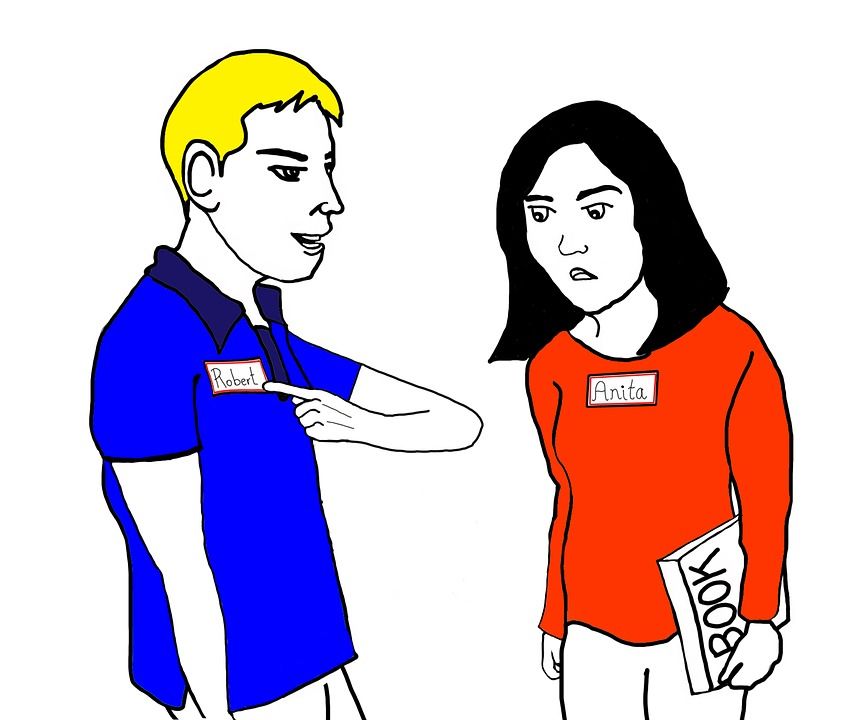 I’m going to admit, I have a strong love/hate relationship with the naming part of character planning. In fact, I’ve often left several characters unnamed until almost the final draft. I suspect part of the reason I struggle with this comes from just how much weight a name can carry.
I’m going to admit, I have a strong love/hate relationship with the naming part of character planning. In fact, I’ve often left several characters unnamed until almost the final draft. I suspect part of the reason I struggle with this comes from just how much weight a name can carry.
The name is the first impression your reader is going to get. It needs to match the character and complement their identity, otherwise you risk taking the reader out of the story.
If this is something you struggle with, luckily some very smart people who are much better with technology than I am have already done a lot to help you with that problem. Take a look at these name generators.
2. Do you know the basics?
 Are you able fill out the first page of any registration form for your character?
Are you able fill out the first page of any registration form for your character?
Can you tell me details like their age, race, social class, education level, and appearance?
If your character were to go missing and you had to hang up flyers, what would you include? How would people recognize them? Are there any key characteristics that are important to remember? Once again, this is not the sort of detail that will bring you or your character fame and glory, but it is very necessary skeleton work that holds them together.
I recommend writing the answers to these questions down somewhere you can find later. Unless something drastic changes, this is the sort of information you’re going to want on hand when you start trying to write this character’s first scene.
3. What do they mean to the story?
 Now that you’ve done all the legwork, why exactly did you bring this character into the story? What are they adding to the plot? Or rather, if you replaced this character with a lamp, what would your story lose?
Now that you’ve done all the legwork, why exactly did you bring this character into the story? What are they adding to the plot? Or rather, if you replaced this character with a lamp, what would your story lose?
When you’re trying to create a real human being out of nothing, it’s sometimes helpful to get a better understanding of the space you want them to fill. This way, you know the bare minimum that this character needs to do in order for the story to flow. From this starting point, you can build upward and onward.
Write up a line or two describing what they are bringing to your piece and how they relate to the larger plot. Think something along the lines of:
“Calvin loses his family doughnut shop in freak accident with a Fedex truck the day after his wife leaves him. Despite his own needs, Calvin is the heart and support system for the main group of friends.”
As you develop your characters and the plot around them, I encourage you to revisit these few lines and expand them and explore how your cast of characters interact and what their actions and presence cause within the plot.
4. What are they good at?
 Everyone you have ever met is good at something. Whether that refers to their knack for astrophysics or their ability to cry on command, there’s something. Take a moment to think about your character critically and write down a list of skills they posses or have even mastered.
Everyone you have ever met is good at something. Whether that refers to their knack for astrophysics or their ability to cry on command, there’s something. Take a moment to think about your character critically and write down a list of skills they posses or have even mastered.
Think about how they came to cultivate these talents and what they tend to use them for on a day to day basis. Do they use their skills to their fullest capacity? Is their any room for their skills or talents to grow throughout the course of the plot?
5. What do they care about?
I understand that as some of you are reading this, there’s inevitably going to be a small part of you that wants to hold up a great and shinning exception to any one of my suggestions. With that in mind, if you genuinely have a character that is a fully-realized apathetic asshole, you are more than welcome to skip this question.
For the rest of us, right next to that list of skills, make a list of things this character cares about and make note of how much. Pay special attention to:
- Other characters
- Places
- Foods
- Ideologies
- Memories
- Goals
- Hobbies
These are the things that are going to ultimately get your reader to relate and care about your character.
6. How do they speak?
 Along with the obvious “do they have an accent?” this question also plays largely into how old and how educated your character is.
Along with the obvious “do they have an accent?” this question also plays largely into how old and how educated your character is.
Think about where your character is from. Based on that environment, would they be speaking in traditionally-grammatical english? If they speak differently than those who they grew up around, why is that?
If your goal is to make a well developed character, then there needs to be some sort of cause and effect in their life. If they happened to grow up with limited education for example, it wouldn’t make clear sense for them to sound like an English textbook.
Think of this question as a sort of springboard if you like. Make note of the events from the character’s past, both pre-narrative and early-narrative, and keep track of how they affect the character’s future.
7. Where are their flaws?
 Just as I said earlier that everyone is good at something, I also feel the need to add that no one is good at everything. So once again, please take out that list you’ve been making and draw up a third column.
Just as I said earlier that everyone is good at something, I also feel the need to add that no one is good at everything. So once again, please take out that list you’ve been making and draw up a third column.
Does your character have any main personality flaws:
- Anger management
- Anxiety
- Narcissism
- Self delusions
Are they bad at any particular activities:
- Math
- Public speaking
- Sharing emotions
- Athletics
While you’re on this line of thought, it’s all very nice to decide to give Suzie a stammer, but there’s a little more to it than just that. To make sweet Suzie into a fully rounded character, her flaws need to ultimately make sense and fit in with the rest of her person and her narrative. Where did they come from? How does your character cope?
8. How do they learn from their mistakes?
 Part of creating well-rounded characters means both leaving room for growth, and giving your character the tools in order to grow.
Part of creating well-rounded characters means both leaving room for growth, and giving your character the tools in order to grow.
In other words, when things get hard or go wrong, how does your character react? Are they the sort of person to keep a clear head? Do they think through their options pragmatically, step by step? Or are they more of an emotionally driven person? Will they listen to other people’s opinions or will they stubbornly stick to their original idea?
This would be a nice time to turn back and look again at your character’s flaws and consider how they might change over time. While obviously some of them will remain by the end of the narrative, at least a few should be addressed in some way. How is your character going to approach that? How will these changes affect the plot?
9. What are the characters’ relationships with each other?
 In the same way that it’s important to think about your character’s personality in complex ways, it’s equally important to consider how they interact with the people around them.
In the same way that it’s important to think about your character’s personality in complex ways, it’s equally important to consider how they interact with the people around them.
The most important thing to remember is who they love and hate. But introduce more complex relationships as well:
- Who are they jealous of?
- Who do they resent?
- Who do they admire?
Remember that relationships aren’t always what they seem. Think about how the character might be tricking herself or others:
- Who do they appear to hate but actually love?
Character Development Resources:
Here is an amazing character questionnaire.
To help you with describing your characters, here is a gigantic list of character descriptions.
12 Strategies to help you name your characters.
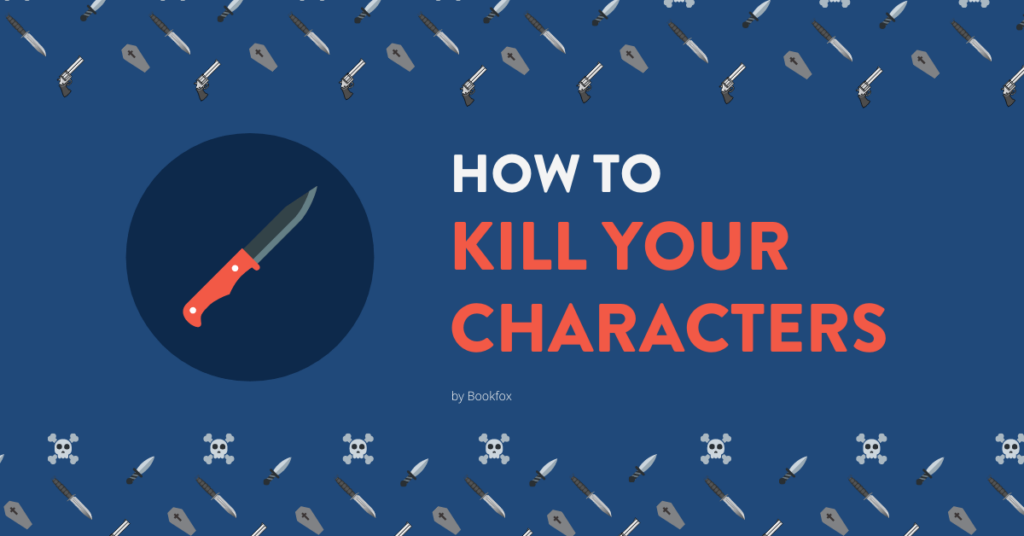
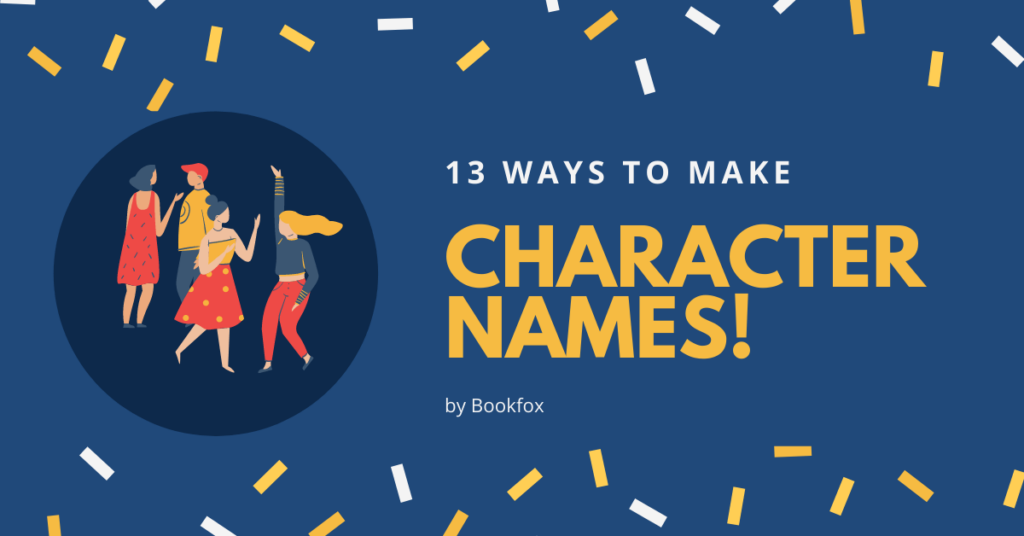

One thought on “Character Development Jetpack: 6 Tricks & 9 Questions”
What’s the procedure for receiving your writing resources. Character Development Jetpack would be a good start for me. Thank you